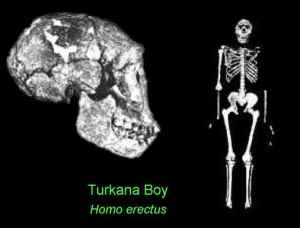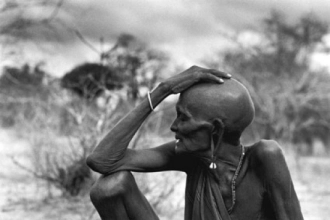Turkana Boy, also occasionally, Nariokotome Boy is the common name of fossil KNM-WT 15000, a nearly complete skeleton of a hominid who died in the early Pleisticene. This specimen is the most complete early human skeleton ever found. It is 1.5 million years old. Once thought to be a member of the species Homo erectus; after much heated debate, it was recently classified as Homo ergaster.
His age has been estimated from 7 years six months to as old as 15 years. The most recent scientific review suggests 8 years of age. It was initially suggested that he would have grown into 1.85 m tall adult but the most recent analysis argues for the much shorter stature of 1.63 m. The reason for this shift has been research showing that his growth maturation differed from that of modern humans in that he would have had a shorter and smaller adolescent growth spurt.
The skeleton was discovered in 1984 by Kamoya Kimeu, a member of a team led by Richard Leakey, at Nariokotome near Lake Turkana in Kenya.
source: Wikipedia (click picture for link)
Delta Class:
Click on the map to see a Prezi by Maddy about the religion of the Dorobo Tribe in Kenya.
Click on the picture to see a Prezi by Kali
This is a video that was shared by Jackson
Sigma Class:
Power Point: SRI Turkana Boy Presentation



